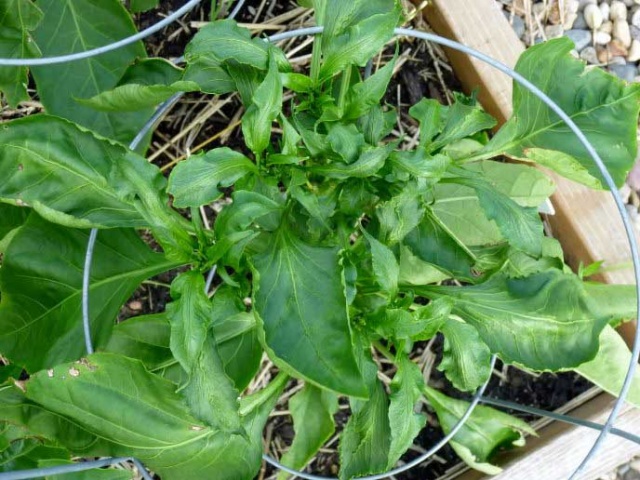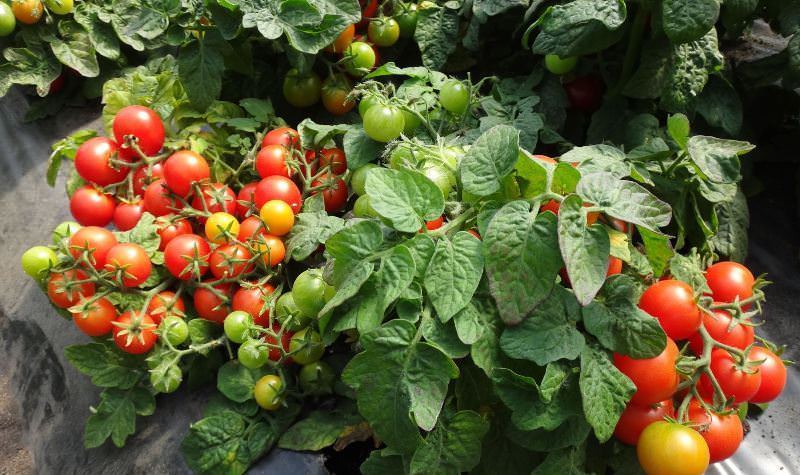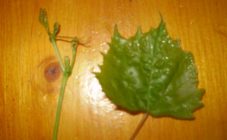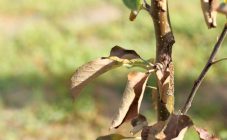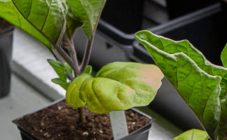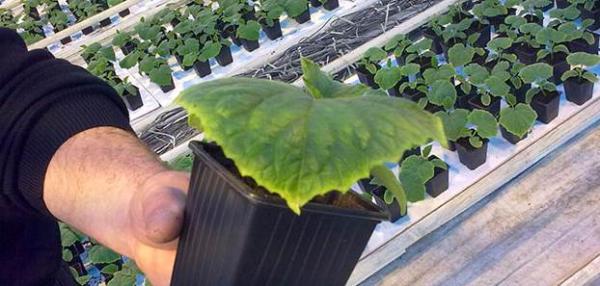Content:
The agricultural technology of cucumbers is quite diverse and depends mainly on the climatic conditions of growing. Observing simple rules, the harvest can be obtained both when growing cucumbers in a greenhouse and in the open field. If the leaves of cucumbers begin to curl or bend, this is a clear sign: something is going wrong.
Planting and leaving
Cucumber is a heat-loving vegetable. If in regions with a stable warm climate it can be cultivated in a seedless way, sowing germinated seeds directly into open ground, then in areas with unfavorable conditions for agriculture, it is recommended to grow cucumbers through seedlings, planting them in a soil warmed up to 15-17 degrees in a greenhouse or on a balcony ... Due to the fact that the cucumber lashes are arranged vertically, the plant can be grown even on a windowsill!
Seedling method of growing
Seeds should be sown in late April - early May to a depth of 1-1.5 cm, and the seed should preferably be placed with the pointed side up (this will help the cotyledon leaves get rid of the seed coat). In open ground (in a greenhouse or on a garden bed), seedlings can be planted when the soil temperature reaches 15-17 degrees.
Seedless growing method
Sowing seeds is carried out to a depth of 1-1.5 cm in a well-moistened and heated soil. You can first add humus and some ash to the soil, this will accelerate seed germination and help the development of plants. The landing site should be sunny and sheltered from the wind.
Care
The main condition for good growth of seedlings is a suitable soil temperature. If the ground is not warmed up enough (below 15 degrees), the seeds will not sprout, and the plants grown through seedlings will greatly slow down their growth or die. Like other members of the Pumpkin family, for the normal development and high productivity of the plant, its root system must be warm. At the same time, the aboveground part of the cucumbers is quite resistant to cold weather.
To provide cucumbers with favorable conditions for development, you can cultivate them in a "warm" bed. With this method of cultivation, branches, compost, humus are laid in layers in the depths of the bed, the layers are covered with a layer of fertile soil on top. Compost and twigs, re-cooking, will generate heat, which will go up to the root system of the plants.
Why do cucumber seedlings curl leaves
Even with the correct temperature regime, you can find that in some plants the leaves begin to turn yellow and curl. There may be several reasons for this.
Insufficient moisture
Cucumber is a vegetable with a high water content; it requires abundant watering to form ovaries and ripen fruits. The soil should always be moistened 10-15 cm deep. If the plant is in a greenhouse, greenhouse or on a windowsill, care must be taken that the air is not too dry. Air humidity should be 70-80%. This can be achieved by spraying the leaves and the surrounding area with water from a spray bottle.
Watering should be done only with warm water. In cold weather, water for irrigation should be slightly diluted with boiling water in order to bring it to an acceptable temperature.
The appearance of root rot
Ice water during irrigation, cold condensation from greenhouse walls, and excessive watering of plants, in which the air needed by the roots is displaced by water, can cause the development of root rot. Hypothermia or, on the contrary, overheating (more than 30 degrees) of the soil can also provoke this disease. In addition to yellowing and curling leaves, the symptoms of root rot include a darkening of the stem downward from the first pair of leaves: the stem becomes brown, and the whole cucumber whip becomes loose.
Soil poverty
Lack of trace elements in the soil that are required for full-fledged growth of cucumbers can also lead to the fact that cucumber leaves begin to deform. Moreover, if the edges of the leaf are tucked inward, and the leaf veins turn yellow, the plant lacks nitrogen, and if the entire leaf takes the shape of a bowl, and its edges are bent up, the reason is a lack of potassium. Lack of calcium will cause the leaves to curl.
Insect damage
The juicy foliage of cucumbers attracts many pests. Often, the leaves curl when the plant is affected by a spider mite or aphids. This can be detected with the naked eye by examining the underside of the cucumber leaf.
Powdery mildew
This disease affects most types of garden crops, and cucumbers are no exception. Planting density, thickening of the lashes can cause damage to plantings with powdery mildew. The most unstable to the disease are cucumbers grown on the window, because it is much more difficult to provide plants with space in this case.
What to do if leaves of cucumber seedlings curl
Having figured out why the leaves of cucumber seedlings curl, you need to choose a treatment tactics.
Root rot
Before planting seedlings, the soil should be treated with a weak solution of potassium permanganate. During the entire process of vegetation of plants, it is necessary to monitor the irrigation regime.
Introduction of microelements
The lack of nitrogen is compensated by the timely introduction of ammonium nitrate or urea into the soil.
Potassium salt will help the cucumbers to fill the potassium deficiency. The use of complex fertilizers such as Fertik, Fermilon will allow you to supplement the soil composition with nutrients without the risk of an excess of them.
Pest control
The use of insecticides such as Inta-Vir, Fitoverm will help get rid of parasitic insects. Each leaf affected by aphids should be torn off and destroyed.
Getting rid of powdery mildew
Since this disease is caused by a fungus, leaves that have begun to curl and become covered with a whitish coating should be treated with antifungal drugs: Hom, Topaz, Quadris. It is necessary to ensure good ventilation of the area where cucumbers are cultivated.
Prevention
Cucumber leaves will not begin to bend if a number of conditions are met when growing cucumbers:
- Prepare the soil correctly before planting. The soil should be sufficiently warm, moist and nutritious, and its composition should include such trace elements as nitrogen, potassium, molybdenum and phosphorus. To prevent fungal infections, the soil can be shed with a weak solution of potassium permanganate.To reduce the risk of insect damage to plants and to provide the roots of cucumbers with oxygen, the soil should be well loosened.
- Timely apply top dressing and fertilizers: 2 weeks after planting the seedlings; when ovaries appear; when fruits appear.
- If the ground is well warmed up, then fertilizers can be applied to the root space. At low temperatures, the roots do not absorb nutrients well, so fertilizing can be done by spraying the leaves.
- Watering with the addition of various kvass and infusions that you can prepare yourself will help prevent the development of fungal diseases and saturate the plants with nutrients. To make kvass, you need to insist rusks soaked in a bucket of water for a week. For a week, you need to insist and water-drenched nettles, burdock or mowed chopped grass. Do not allow the leaves to curl and sprinkle them with a solution prepared on the basis of whey or milk diluted with water with the addition of a few drops of iodine.
Proper pre-sowing preparation, timely feeding, sufficient watering and regular inspection of leaves for damage will allow you to grow strong plants and get a rich and tasty harvest.

